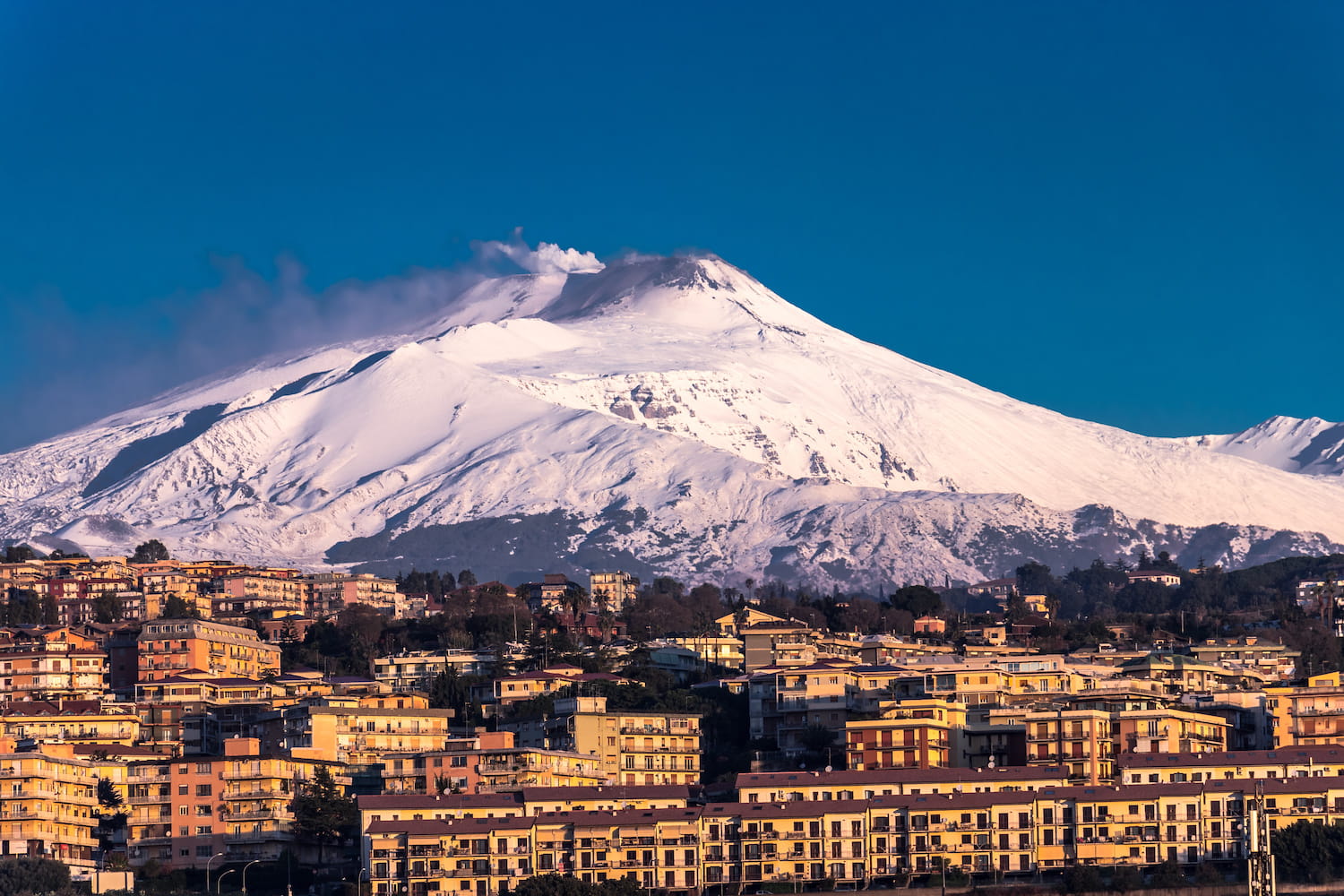
Mt. Etna, towering majestically over the eastern coast of Sicily, isn't just any volcano. It's one of the most active in the world, a living, breathing giant with a history as rich and layered as the earth it rises from. For centuries, this natural wonder has captivated scientists, artists, and adventurers alike with its fiery eruptions and ethereal landscapes. But what makes Mt. Etna truly fascinating are the lesser-known facts that paint a fuller picture of its power and beauty. From its ancient myths to its influence on agriculture and its role in scientific research, there's much to uncover about this iconic peak. Ready to learn more about what makes Mt. Etna a marvel of nature? Let's delve into 18 intriguing facts that reveal the essence of this majestic mountain.
The Mighty Mt Etna
Mt Etna, located on the east coast of Sicily, Italy, is one of the most active volcanoes in the world. Its fiery eruptions and towering presence have fascinated humans for centuries. Let's dive into some intriguing facts about this natural wonder.
-
Europe's Tallest Volcano
Mt Etna stands at approximately 3,329 meters (10,922 feet), making it the tallest active volcano in Europe. Its height changes with each eruption due to the accumulation or loss of volcanic material. -
Ancient Origins
The volcano's origins date back about 500,000 years. It has been erupting continuously for around 2,700 years, making it one of the world's oldest active volcanoes. -
Mythological Connections
In Greek mythology, Mt Etna was believed to be the home of Vulcan, the god of fire, and the forge of Hephaestus. Legends say that the giant Typhon was trapped under the mountain by Zeus.
Eruptions and Activity
Mt Etna's frequent eruptions have shaped its landscape and the lives of those living nearby. Here are some fascinating details about its volcanic activity.
-
Frequent Eruptions
On average, Mt Etna erupts once every three months. These eruptions can range from minor lava flows to explosive events that send ash plumes high into the sky. -
Lava Flows
The lava from Mt Etna can travel at speeds of up to 60 kilometers per hour (37 miles per hour). This fast-moving lava has created extensive lava fields over the centuries. -
Volcanic Ash
Eruptions often produce large amounts of volcanic ash, which can affect air travel and agriculture. The ash can be carried by winds over long distances, impacting areas far from the volcano.
Geological Features
Mt Etna's unique geological features make it a subject of study for scientists and a marvel for visitors.
-
Crater Count
The volcano has four summit craters and more than 300 vents on its flanks. These craters and vents are the sources of its frequent eruptions. -
Volcanic Caves
Lava tubes and caves formed by flowing lava are scattered around Mt Etna. These caves provide a glimpse into the inner workings of the volcano. -
Valle del Bove
This large horseshoe-shaped depression on the eastern side of Mt Etna is a result of a massive collapse around 8,000 years ago. It is one of the most striking features of the volcano.
Impact on Human Life
Living near an active volcano like Mt Etna comes with its challenges and benefits. Here are some ways the volcano affects human life.
-
Fertile Soil
The volcanic soil around Mt Etna is incredibly fertile, making it ideal for agriculture. Vineyards and orchards thrive in this rich soil, producing high-quality fruits and wines. -
Tourism
Mt Etna attracts thousands of tourists each year. Visitors come to hike its slopes, explore its craters, and witness its eruptions, boosting the local economy. -
Hazards
Despite its beauty, Mt Etna poses significant hazards. Lava flows, ashfall, and gas emissions can threaten nearby communities and require constant monitoring.
Scientific Research
Mt Etna is a hotspot for scientific research, providing valuable insights into volcanic activity and Earth's processes.
-
Monitoring Stations
Numerous monitoring stations are set up around Mt Etna to track its activity. These stations measure seismic activity, gas emissions, and ground deformation. -
Volcanology Studies
Scientists study Mt Etna to understand volcanic behavior better. Research conducted here helps predict eruptions and mitigate risks associated with volcanic activity. -
Climate Impact
Eruptions from Mt Etna can influence the climate. Volcanic ash and gases released into the atmosphere can affect weather patterns and temperatures.
Cultural Significance
Mt Etna holds a special place in the hearts and minds of those who live in its shadow. Its cultural significance is reflected in various aspects of life.
-
Local Legends
Stories and legends about Mt Etna are passed down through generations. These tales often highlight the volcano's power and its impact on the region. -
Festivals
Local festivals celebrate Mt Etna and its influence on the community. These events often include traditional music, dance, and food, showcasing the area's rich cultural heritage. -
Art and Literature
Mt Etna has inspired countless works of art and literature. Its dramatic eruptions and majestic presence have been depicted in paintings, poems, and stories throughout history.
A Final Glance at Mt. Etna's Majesty
Mt. Etna, standing tall with its fiery heart and snow-capped peaks, offers a unique blend of natural beauty and geological power. This active volcano, rich in history and mythology, continues to captivate scientists, tourists, and locals alike. Its eruptions, while a display of nature's force, nourish the surrounding land, making it a fertile haven for vineyards and orchards. Beyond its physical might, Etna holds a cultural significance, inspiring artists and writers through the ages. As we've journeyed through the facts, it's clear that Etna isn't just a mountain; it's a living, breathing entity that shapes the landscape and lives of those around it. Whether it's through the lens of a camera, the pages of a book, or the soles of your boots, experiencing Mt. Etna is to witness the Earth's incredible capacity for creation and destruction.
Was this page helpful?
Our commitment to delivering trustworthy and engaging content is at the heart of what we do. Each fact on our site is contributed by real users like you, bringing a wealth of diverse insights and information. To ensure the highest standards of accuracy and reliability, our dedicated editors meticulously review each submission. This process guarantees that the facts we share are not only fascinating but also credible. Trust in our commitment to quality and authenticity as you explore and learn with us.


